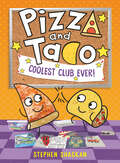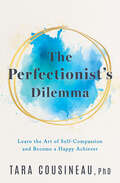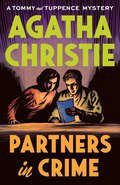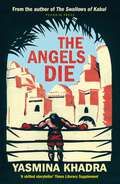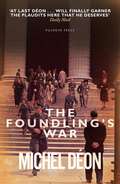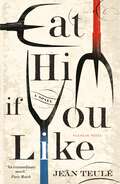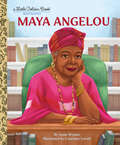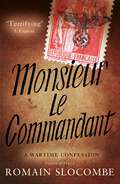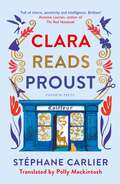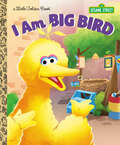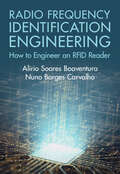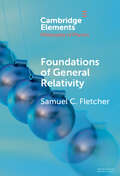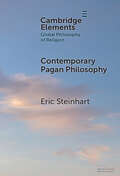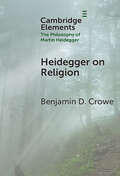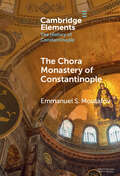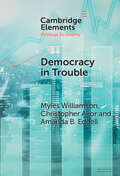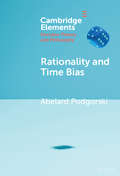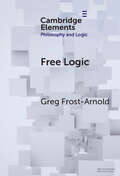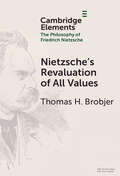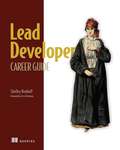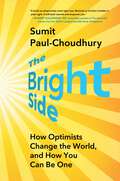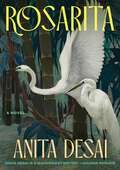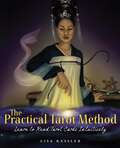- Table View
- List View
Dark Brilliance: The Age of Reason: From Descartes to Peter the Great
by Paul StrathernA sweeping history of The Age of Reason, revealing how—although it was a time of great progress—it was also an era of brutality and intolerance with a very human cost.During the 1600s—between the end of the Renaissance and the start of the Enlightenment—Europe lived through an era known as The Age of Reason. This was a revolutionary period that saw great advances in areas such as art, science, philosophy, political theory, and economics. However, all this was accomplished against a background of extreme political turbulence on a continental scale, in the form of internal conflicts and international wars. Indeed, the Age of Reason itself was born at the same time as the Thirty Years' War, which would devastate central Europe to an extent that would not be experienced again until World War I. This period also saw the development of European empires across the world, as well as a lucrative new transatlantic commerce that brought transformative riches to Western European society. However, there was a dark underside to this brilliant wealth: it was dependent upon human slavery. By exploring all the key events and bringing to life some of the most influential characters of the era—including Caravaggio, Rembrandt, Newton, Descartes, Spinoza, Louis XIV, and Charles I—acclaimed historian Paul Strathern tells the vivid story of this paradoxical age, while also exploring the painful cost of creating the progress and modernity upon which the Western world was built.
Pizza and Taco: (A Graphic Novel) (Pizza and Taco)
by Stephen ShaskanJoin Pizza and Taco's afterschool club in the next installment of this hilarious graphic novel chapter book series! What happens when these foodie besties have to compete with a video game club for members ?Pizza and Taco are serving up more awesomeness with a cool new club! They can't wait to talk about all their favorite interests...including making comic books. Lots of people signed up, so they know it's going to be popular! Then why does everyone go to Cheeseburger's video game club instead?! Pizza and Taco have no choice but to check it out. They just might learn that kids want to make comics just as much as they want to play video games! This hilarious young graphic novel series—with chapters—will tickle the funny bones of kids ages 5-8 and bolster their reading confidence. It's the perfect stepping stone for those who are transitioning to longer chapter books and graphic novels.Readers will be hungry to read all eight books in the series! Here are just a few:Who's the Best?Super-Awesome Comic!Too Cool for SchoolDare to be Scared!
The Perfectionist's Dilemma: Learn the Art of Self-Compassion and Become a Happy Achiever
by Tara Cousineau&“A brilliant book...a must-read for the frazzled perfectionist.&” —Thomas Curran, PhD, leading perfectionism researcher and author of The Perfection TrapBreak free of toxic perfectionism by cultivating emotional courage and self-compassion to face life's challenges with a 6-step program.In today&’s high-pressure society, we are constantly fed a fable of individualism, exceptionalism, determination, and ingenuity and taught a mythology of grin and bear it; no pain, no gain; and hard work pays off, despite the fact that the conditions for success are unpredictable and ever changing. Psychologist Tara Cousineau claims that perfectionism is a paradox: it is the tension created by the need for belonging, a desire for excellence, and a quest for a meaningful and productive life. But perfectionism can be transformed by learning to connect both head and heart, replacing inner algorithms of comparison and criticism with self-acceptance and self-compassion.In The Perfectionist&’s Dilemma, Cousineau introduces an innovative six-step solution based on the acronym EVOLVE:Embody the present moment.Validate your experience.Open your heart.Love your inner critic.Make a Vow.Spark the Energy of excellence.EVOLVE helps readers overcome perfectionism and cultivate three essential resources—inner worth, inner humanity, and inner leadership. Through storytelling and anecdotes from recovering perfectionists who have participated in Cousineau&’s workshops, readers can learn to align mind, body, heart, and spirit—to become happy achievers.
Partners in Crime (Tommy and Tuppence)
by Agatha ChristieTommy and Tuppence, Agatha Christie&’s bantering pair of 1920s bright young things, solve mysteries together as a pair of newlyweds in this delightful collection of linked short stories.Tommy Beresford and Tuppence Crowley, after their first foray into amateur crime-solving in Christie&’s earlier novel The Secret Adversary, are now happily married to each other—but both are finding the settled life a little boring. When the opportunity arises to go undercover disguised as professional detectives, the newlyweds seize the chance. While helping Scotland Yard infiltrate a ring of international spies, they also take on every chance client who comes through the door. In the process, they succeed in recovering a stolen pink pearl, finding out who poisoned a box of chocolates, and tracing how a murderer vanished into thin air on a golf course, among other thrilling adventures.
The Angels Die
by Yasmina Khadra"However successful you may become, you will always be just the little Arab from the souk."Even as a child living hand-to-mouth in a ghetto, Turambo dreamt of a better future. So when his family find a decent home in the city of Oran anything seems possible. But colonial Algeria is no place to be ambitious for those of Arab-Berber ethnicity. Through a succession of menial jobs, the constants for Turambo are his rage at the injustice surrounding him, and a reliable left hook. This last opens the door to a boxing apprenticeship, which will ultimately offer Turambo a choice: to take his chance at sporting greatness or choose a simpler life beside the woman he loves. Award-winning author Yasmina Khadra gives us a stunning panorama of life in Algeria between the two world wars, in this dramatic story of one man's rise from abject poverty to a life of wealth and adulation.
The Foundling's War
by Michel DéonIn the aftermath of French defeat in July 1940, twenty-year-old Jean Arnaud and his ally, the charming conman Palfy, are hiding out at a brothel in Clermont-Ferrand, having narrowly escaped a firing squad. At a military parade, Jean falls for a beautiful stranger, Claude, who will help him forget his adolescent heartbreak but bring far more serious troubles of her own.Having safely reached occupied Paris, the friends mingle with art smugglers and forgers, social climbers, showbiz starlets, bluffers, swindlers and profiteers, French and German, as Jean learns to make his way in a world of murky allegiances. But beyond the social whirl, the war cannot stay away forever...In this sequel to the acclaimed novel The Foundling Boy, Michel Déon's hero comes to manhood not through combat but by discovering truths about desire and possession, sex and love, and the nuances that lie between crudely drawn battle lines.
Eat Him If You Like
by Jean TeuléThe Perigord: a beautiful August day. Kind, well-respected young nobleman, Alain de Monèys, sets off happily for the local fair at Hautefaye.But this is the summer of 1870, a time of terrible drought and even worse defeats for France in the Franco-Prussian war. One misheard comment at the fair sets in motion an horrific train of events that Alain, for all his popularity, is powerless to stop...Based on a shamefully brutal incident from French history, Jean Teulé's riveting story shows how easily a group of individuals can turn into an irrational, bloodthirsty mob.
Maya Angelou: A Little Golden Book Biography (Little Golden Book)
by Anne WynterHelp your little one dream big with a Little Golden Book biography about writer, poet, and Civil Rights activist Maya Angelou. Little Golden Book biographies are the perfect introduction to nonfiction for young readers—as well as fans of all ages!This Little Golden Book about Maya Angelou--the acclaimed poet, lecturer, activist, and author of I Know Why the Caged Bird Sings--is an inspiring read-aloud for young readers.Look for more Little Golden Book biographies:Martin Luther King Jr.Harry BelafonteOprah WinfreyFrida Kahlo
Monsieur Le Commandant
by Romain SlocombeFrench Academician and Nazi sympathiser, Paul-Jean Husson, writes a letter to his local SS officer in the autumn of 1942.Tormented by an illicit passion for Ilse, his German daughter-in-law, Husson has taken a decision that will devastate several lives, including his own.The letter explains why. It is a dramatic and sometimes harrowing story that begins in the years leading up to the war, when the Academician's gilded existence starts to unravel. Husson's confession is a startling picture of one man's journey: from pillar of the French Establishment and First World War hero, to outspoken supporter of Nazism and the Vichy government.
Clara Reads Proust
by Stéphane CarlierA tender and witty coming-of-age story about the power of literature to inspire new beginnings, peppered with a cast of quirky characters and a unique heroine. Clara is a hairdresser at Cindy Coiffure, a sleepy French salon with an identity crisis. Her relationship is fizzling out. Her tanoholic boss Madame Habib worships Jacques Chirac and talks longingly of her days in Paris. And now Madame Lévy-Leroyer wants to go blonde. Clara can't help but wonder if there's more to life than this . . . Everything changes when a customer leaves behind the first volume of In Search of Lost Time by Marcel Proust. As Clara reads, she discovers a new world. And slowly but surely, she will work out who she wants to be.
I Am Big Bird (Little Golden Book)
by Christy WebsterA new Little Golden Book—all about Big Bird!Everyone's favorite feathery friend tells readers all about himself in this terrific Little Golden Book. What's his favorite food? A birdseed milkshake! Young boys and girls will love getting to know more about Sesame Street's Big Bird, from Big Bird!Sesame Workshop, the nonprofit educational organization behind Sesame Street, is dedicated to helping kids grow smarter, stronger, and kinder. By creating researched-based media and resources for families around the world, Sesame Workshop is able to meet children&’s most pressing needs. With a focus on foundational knowledge & skills, creativity & playful problem-solving, self-identify & belonging, and emotional well-being, Sesame Street is the most trusted name in early learning.
Radio Frequency Identification Engineering: How to Engineer an RFID Reader
by Alírio Soares Boaventura Nuno Borges CarvalhoRadio Frequency Identification Engineering Radio frequency identification (RFID) has become an undeniable aspect of modern living, being used from logistics, access control, and electronic payment systems to artificial intelligence, and as a key building block of the internet of things. Presenting a unique coverage of RFID reader design and engineering, this is a valuable resource for engineers and researchers, aiding in their mission of fulfilling current and future demands in the RFID space. Providing a cohesive compilation of technical resources for full-stack engineering of RFID readers, the book includes step-by-step techniques, algorithms, and source code that can be incorporated in custom designs. Readers are invited to explore the design of RFID interrogators based on software-defined radio for flexible, upgradeable solutions as well as low-complexity techniques for engineering low-cost RFID readers. Additionally, the authors provide insight into related topics such as waveform design optimization for improved reading range and novel quadrature backscatter modulation techniques.
Foundations of General Relativity (Elements in the Philosophy of Physics)
by Samuel C. FletcherThis Element provides a somewhat comprehensive interpretation of general relativity, a description of what reality would be like if the theory were true. This concerns (i) what possibilities it represents, (ii) the internal structure of those possibilities and their interrelations, and, to some extent, (iii) how those possibilities differ from what's come before. By providing an interpretive foil that one can amplify or amend, it aspires to shape the research agenda in the foundations of general relativity for established philosophers of physics, graduate students searching for work in these topics, and other interested academics. This title is also available as Open Access on Cambridge Core.
Contemporary Pagan Philosophy (Elements in Global Philosophy of Religion)
by Eric SteinhartOne of the most remarkable features of the current religious landscape in the West is the emergence of new Pagan religions. Here the author will use techniques from recent analytic philosophy of religion to try to clarify and understand the major themes in contemporary Paganisms. They will discuss Pagan concepts of nature, looking at nature as a network of animated agents. They will examine several Pagan theologies, and Pagan ways of relating to deities, such as theurgy. They will discuss Pagan practices like divination, visualization, and magic. And they will talk about Pagan ethics. Their discussions are based on extensive references to contemporary Pagan writings, from many different traditions. New Pagan religions, and new Pagan philosophies, have much to contribute to the religious future of the West, and to contemporary analytic philosophy of religion.
Heidegger on Religion (Elements in the Philosophy of Martin Heidegger)
by Benjamin D. CroweThroughout his career, Heidegger explored the religious sides of life in ways that had far-reaching impacts on the thought of his contemporaries and successors. This Element examines three important stops along Heidegger's ways of thinking about religion as the risky performance of life in new spaces of possibility. Section 1 examines Heidegger's 1920–1921 lectures on Paul, while Section 2 turns to the darker period of the late 1930s, exploring how Heidegger reconfigures religion in the context of his “new inception” of thought beyond metaphysics. Finally, Section 3 takes up Heidegger's challenging discussions of the divine in several postwar addresses and essays. In each case, Heidegger argues that we must suspend, bracket, or rescind from our tendencies to order, classify, define, and explain things in order to carry out a venture into a situation of indeterminacy and thereby recast religion in a new light.
The Chora Monastery of Constantinople (Elements in the History of Constantinople)
by Emmanuel S. MoutafovThe Chora is one of the most celebrated churches built in Constantinople during the Byzantine era (330–1453). It is particularly famous for its glorious mosaics and frescoes, mostly dating to the fourteenth century, which are a particularly fine example of Late Byzantine art. After the Ottoman conquest of Constantinople in 1453 the church was repurposed as a mosque, known as the Kariye Camii. Between 1945 and 2020 it had another incarnation, as the Kariye Museum, but then in 2020, in line with changing Turkish governmental policies, it again became a mosque. This Element sets out the history of the building, presents its artwork, and considers how best to interpret its construction, significance, and meaning. Above all, it offers an insight into images and words that are currently inaccessible to the general public.
Democracy in Trouble: Democratic Resilience and Breakdown from 1900 to 2022 (Elements in Political Economy)
by Myles Williamson Christopher Akor Amanda B. EdgellThis Element investigates the process of executive aggrandizement to identify factors associated with democratic resilience. We focus on five democracies that showed resilience in the face of incumbent-led autocratization. To understand how these cases survived, we pair them with similar cases where incumbents successfully dismantled democracy from within. Through structured focused comparisons, our inductive exercise provides insights into how the process of executive aggrandizement unfolds. The case narratives reveal similar patterns, with incumbents often targeting the media, civil society, and judiciary and using shared tactics to weaken democratic institutions. Where democracies survived, anti-democratic incumbents made critical errors, including major policy blunders and miscalculations, which ultimately cost them their positions and allowed democracy to rebound. Where democracy broke down, incumbents were largely able to avoid or mitigate such errors, often through ethnopopulist appeals.
Rationality and Time Bias (Elements in Decision Theory and Philosophy)
by Abelard PodgorskiWe often care not only about what happens to us, but when it happens to us. We prefer that good experiences happen sooner, rather than later, and that our suffering lies in our past, rather than our future. Common sense suggests that some ways of caring about time are rational, and others are not, but it is surprisingly challenging to provide justifying explanations for these tendencies. This Element is an opinionated, non-technical guided tour through the main philosophical issues about the relevance of the temporal location of our experiences to our desires and our choices, and the major arguments for and against different kinds of so-called time bias.
Free Logic: A Generalization (Elements in Philosophy and Logic)
by Greg Frost-ArnoldClassical logic assumes that names are univocal: every name refers to exactly one existing individual. This Principle of Univocality has two parts: an existence assumption and a uniqueness assumption. The existence assumption holds that every name refers to at least oneindividual, and the uniqueness assumption states that every name refers to at most one individual. The various systems of free logic which have been developed and studied since the 1960s relax the existence assumption, but retain the uniqueness assumption. The present work investigates violations of both halves of the Principle of Univocality. That is, whereas the free logics developed from the 1960s are called 'free' because they are free of existential assumptions, the current Element generalizes this idea, to study logics that are free of uniqueness assumptions. We explore several versions of free logic, comparing their advantages and disadvantages. Applications of free logic to other areas of philosophy are explored.
Nietzsche's Revaluation of All Values (Elements in the Philosophy of Friedrich Nietzsche)
by Thomas H. BrobjerWhy is Nietzsche's thought and philosophy still regarded as relevant today? There are a large number of possible answers to a question like this, but one of the most important and persuasive is that Nietzsche questioned and discussed the nature, character and value of our values. Nietzsche frequently turns other questions such as epistemological and ontological ones into axiological ones, making values pivotal in his thought. It is possible to argue that the revaluation of all values is both the most important and today the most relevant of Nietzsche's main philosophical themes and projects. Furthermore, the theme is intimately involved with what Nietzsche regarded as his most important work, his magnum opus (that he called his Hauptwerk), for a long period called The Will to Power but later Revaluation of All Values.
Lead Developer Career Guide
by Shelley BenhoffLearn the skills you need to be a lead developer, with expert advice on mentoring teams, handling clients and project managers, and keeping your head in emergencies.The Lead Developer Career Guide teaches you how to transition from an individual contributor to a thriving lead developer. It's packed with insider tips, tricks, and strategies drawn from author Shelley Benhoff's 25-year career in technology, providing vital insights for navigating the unique challenges and expectations of the lead developer role. This one-of-a-kind book demonstrates how critical thinking and communication skills can elevate your career. In the Lead Developer Career Guide you'll discover: • The key responsibilities of a lead developer • Techniques for writing effective technical documentation • Strategies for improving development processes • Best practices for communicating with non-technical clients • Methods for mentoring and inspiring a team • Approaches for delivering negative feedback constructively The Lead Developer Career Guide is filled with interviews and real-world case studies from industry professionals and esteemed tech experts. You'll learn how to become the public face for your development team, gathering feedback from your coworkers and communicating with clients and stakeholders. Plus, you'll find proven techniques to reliably calculate project estimates, plan a project from scratch, and mentor junior developers and peers alike. Foreword by Steve Buchanan. About the technology To be a successful Lead Developer you&’ll need more than just technical expertise. You&’ll be responsible for everything from facilitating architectural decisions that satisfy all stakeholders to mentoring your fellow developers. And you&’ll be on the hook for delivering great software on time and under budget. Are you ready for the challenge? This book will help get you there! About the book The Lead Developer Career Guide provides the techniques and wisdom you need to transition from individual contributor to lead developer. You&’ll learn how to collaborate effectively with executive leadership and project managers, present elegant solutions to clients, and think quickly in those inevitable emergencies. When all eyes are on you, this book will ensure you know exactly what to do. What's inside • Improving development processes • Mentoring and inspiring a team • Delivering negative feedback About the reader For aspiring lead developers. About the author Shelley Benhoff has over twenty-five years of experience in tech as a business owner, author, and speaker. The technical editor on this book was Stephen Mizell. Table of Contents 1 What is a lead developer? 2 Lead developer career trajectory 3 Learning lead developer skills 4 Learning any developer skill 5 Writing technical documentation 6 Optimizing the development process 7 Working with project teams 8 Speaking with clients 9 Being a mentor 10 Taking the lead 11 Leading with emotional intelligence 12 Being a successful lead developer
The Bright Side: How Optimists Change the World, and How You Can Be One
by Sumit Paul-ChoudhuryIn the thought-provoking tradition of Steven Pinker&’s Enlightenment Now and Yuval Noah Harari&’s Homo Deus, a fascinating and reassuring look at the philosophy, psychology, and practice of optimism, and why being optimistic is a moral obligation—even in the face of seemingly insurmountable challenges.Scrolling through our daily newsfeeds we see violence and cruelty, turmoil and injustice, fake news and clickbait, and worsening environmental and social crises—just a few of the dark currents feeding a tidal wave of pessimism. In the face of so many challenges, how can we stay optimistic? And, more important, why should we? In The Bright Side, Sumit Paul-Choudhury answers these pressing questions, arguing that optimism is not only essential for overcoming the challenges we face, but also fundamental to human wellbeing. Drawing on a wide array of evidence—from biology to history, and from economics to meteorology—he delves into the underappreciated roots of optimism, examines its impact on mental health and professional success, and discusses why it has a power that wishful thinking lacks. Additionally, The Bright Side shows how we can apply the principles of optimism to cope with environmental crises, artificial intelligence, and social change. From the polar reaches to the world&’s mightiest cities, through inspirational figures including explorers, activists, and scientists, the book illustrates optimism in action. A beacon amid dark times, The Bright Side provides a lens through which we can see the challenges we face more clearly—and it also offers tools for solving them, to create a better future for ourselves and generations to come.
Rosarita
by Anita DesaiFrom &“world-class writer&” (The Washington Post) and three-time Booker finalist Anita Desai, an exquisitely written stunning exploration of love, place, memory, history, and the secrets between a mother and her daughter.Away from her home in India to study Spanish, Bonita sits on a bench in El Jardin de San Miguel, Mexico, basking in the park&’s lush beauty, when she slowly becomes aware that she is being watched. An elderly woman approaches her, claiming that she knew Bonita&’s mother—that they had been friends when Bonita&’s mother had lived in Mexico as a talented young artist. Bonita tells the stranger that she must be mistaken; her mother was not a painter and had never travelled to Mexico. Though the stranger leaves, Bonita cannot shake the feeling that she is being followed. Days later, haunted by the encounter, Bonita seeks out the woman, whom she calls The Trickster, and follows her on a tour of what may, or may not, have been her mother&’s past. As a series of mysterious events brilliantly unfold, Bonita is unable to escape The Trickster&’s presence, as she is forced to confront questions of truth and identity, and specters of familial and national violence. A masterpiece of storytelling from a gifted writer, Rosarita is a profound mediation on mothers and marriage, art and self-expression, and how the traumas from the past can impact future generations.
Move, Rest, Recover: Your Practical Guide to Balancing Mind and Body
by Erin TaylorDiscover how you can balance your mind, body, and nervous system with this practical workbook designed to help you create a recovery practice that supports you in performing and feeling better in all aspects of your active lifestyle.Recovery is the most readily available yet underutilized tool for well-being, the counterbalance to your active lifestyle that allows you to rise to the ever-increasing demands and pace of work, training, and life. This is a missed opportunity that makes you vulnerable to illness, injury, and burnout. Through reflection, writing prompts, and accessible mental and physical recovery tools, Move, Rest, Recover guides you to activate, strengthen, and sustain your own restorative practice. Learn to move through each day more effectively and with more ease, and to use recovery to full advantage by: Decreasing stress and tension Absorbing the benefits and gains of your efforts Increasing attentional capacity Managing and solving physical pain Promoting mental stability Boosting your immune system Improving the quality of your sleep And more Whether you&’re putting in long hours at the office, training for a marathon, or managing the schedule and demands of your household, you&’ll gain understanding of how to clear lingering mental and physical stress and tension throughout your day, every day, in ways that work for you. You can do everything right—curate the best schedule, follow the perfect training plan, and eat all the right foods—but without fully embracing your mind and body&’s innate need for rest, and dedicating ample attention to it, you will miss out. Use this book to rest and recover now, right where you are.
The Practical Tarot Method: Learn to Read Tarot Cards Intuitively (Practical Tarot)
by Lisa KesslerReading tarot shouldn&’t have to be a guessing game or a test on memorization. The Practical Tarot Method: Learning to Read Tarot Cards Intuitively is designed to demystify the process of interpreting tarot, making it more approachable and fun to learn.Tarot cards are a powerful tool to help you tap into Spirit and guide you on your divine path—that is, if you know how to read them. That&’s where this book comes in. Written in a user-friendly way, The Practical Tarot Method will empower you, deepen your self-confidence, and help you develop more trust in your own intuition so you may better connect with and understand the cards. Presented in a relatable way with practice exercises, this book offers different ways to use tarot cards in everyday life, such as for meditation and journaling, reading spreads to answer questions, and as inspiration for creative pursuits. It also includes the author&’s stunning and diverse tarot deck, called Practical Tarot, which was created to reflect and celebrate the diversity of people in the world—there is even a 32-page insert in the back of the book that showcases the full-color cards. From choosing your tarot deck to insights into the natural cycles in the tarot system to the traditional interpretations of tarot cards, both novices and seasoned tarot practitioners are sure to love this book and how it helps them hone their natural intuitive gifts.

